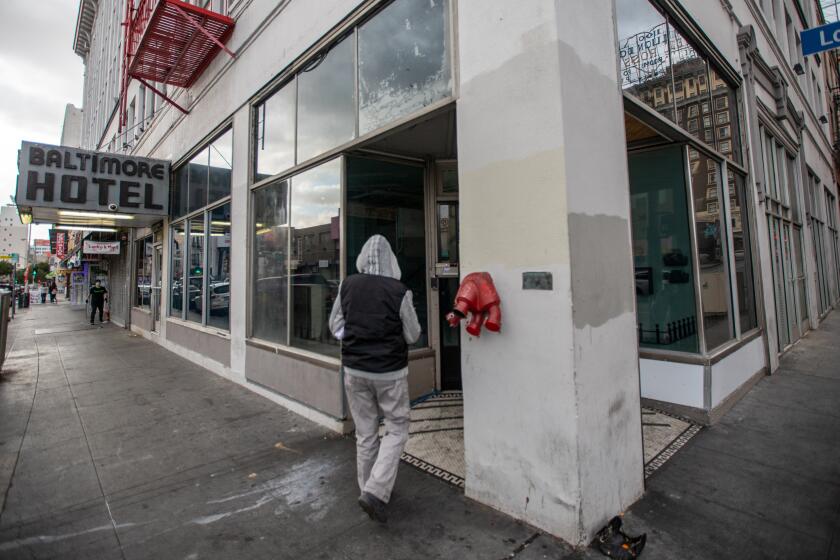A new political landscape
THE GREATEST POLITICAL SWINDLE of the last 50 years in California has been the conspiracy between Democrats and Republicans to protect their own hides by redrawing the state’s legislative and congressional districts. Proposition 77, which would take the redistricting process out of the hands of politicians, offers voters a chance to prevent such mischief. Californians should vote yes on Proposition 77 on Nov. 8.
The current map results from a cynical deal that shows how badly the system is broken. The national GOP was worried that it would lose control of the U.S. House if California Democrats created more Democratic congressional districts after the 2000 census. So, in exchange for a guarantee that it could keep its current seats, the GOP agreed to a plan that assured Democrats a majority in the Legislature and the 53-member U.S. House delegation for a decade.
It was a great deal all around -- except for the people of California.
The political hijacking of 2001 was so blatant that not a single one of the 153 legislative and congressional seats contested in the 2004 election changed party hands. Worse yet, scores of districts now are so solidly Republican or Democratic that only the most conservative of GOP candidates and most liberal Democrats can win them. The winner is whoever survives the party primary. This disenfranchises independents and those who would prefer to see more moderate candidates in both parties. The result is the increasing polarization of politics.
The only way to fix this problem is for voters to approve Proposition 77, which would take the power to draw new district lines away from the Legislature and give it to a panel of three retired judges.
The measure is far from perfect. It calls for new districts for the 2006 election rather than after the next census. Election officials say it’s almost impossible to do the job in time for next June’s primary, so the redrawing might have to be put off until 2008. But by then the 2000 census figures will be even more outdated. There also is a legal question. Through a clerical error, the wording of the initiative petition submitted to the attorney general’s office differs from the wording of petitions that actually were circulated for voter signatures. The courts will have to decide if that is a fatal flaw.
Still, this may be the only chance for another decade to change this corrupt system. The politicians who like the system the way it is argue that redistricting is such an insider’s game that the people either don’t understand it or don’t care. But that argument can be refuted by a quick look at the district maps now in effect for Assembly, state Senate and congressional districts. They sprawl across the countryside like so many stringy blobs -- octopus arms reaching here and there, seemingly at random, in search of clots of Democratic or Republican votes needed to assure the outcome of the next election.
The state Constitution says that redistricting must respect “the geographical integrity of any city, county or of any geographical region” to the extent possible. But the plan drafted by the pols in 2001 laughs at the idea of local or regional integrity. The 21st Senate District, for example, sprawls from west of Tarzana to east of Pasadena, containing all or portions of eight Assembly districts.
Critics say that retired judges aren’t free of bias. But the redistricting plans of the 1970s and 1990s were drafted under court supervision. Both were good plans -- in fact, among the best ever. Besides, we already know that politicians cannot be trusted to draw fair districts.
Proposition 77 will restore some reason and moderation to the political process.
More to Read
Get the L.A. Times Politics newsletter
Deeply reported insights into legislation, politics and policy from Sacramento, Washington and beyond. In your inbox three times per week.
You may occasionally receive promotional content from the Los Angeles Times.






